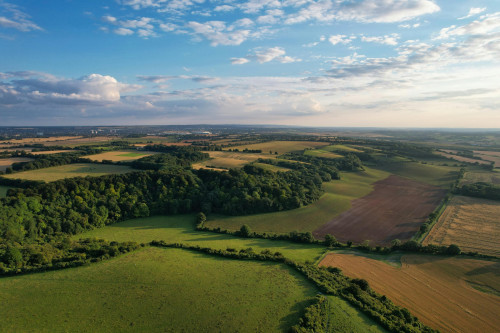Navigating the Green Belt: What homeowners should know before building or extending
15 August 2025 by Chris Kempster
Old browser alert! We have detected you are using a pretty old browser. This website uses cool features that can't be supported by your browser.
If we let you see the website it would look all weird and broken, nobody wants that!
Update your browser!15 August 2025 by Chris Kempster
If you're lucky enough to live in a Green Belt area, you already know it offers beautiful surroundings, a sense of space that’s hard to beat and a tranquillity that’s increasingly rare. But when it comes to making changes to your home - whether that’s an extension, outbuilding, or even a modest loft conversion - things can get a little more complex as stricter planning rules, designed to preserve the rural character of these landscapes come into play.
If you're considering extending or altering your home within a Green Belt, it’s crucial to understand how planning policies apply, and how best to approach them. We’ve helped many homeowners overcome the unique hurdles of Greenbelt projects. Here’s some information on what you need to know before you get started.

Greenbelt land exists to prevent urban sprawl and protect open rural character. Because of this, local planning authorities apply stricter controls over development than in non-Green Belt areas. Even small home extensions may require detailed justification and can face resistance if they’re seen as “disproportionate” or harmful to the openness of the countryside.
When considering an architectural project, it’s also sensible to understand whether any other governing designations apply, such as is your home listed or within a conservation area or located within an Area of Outstanding National Beauty or National Park. An early desktop study will help to identify these such parameters, allowing you to plan accordingly from the outset.
Importantly, both national policy (such as the National Planning Policy Framework) and your local council’s planning policies will shape what’s possible on your site.
The key test is often whether the development is considered “inappropriate” and whether there are “very special circumstances” to justify it.

Design with sensitivity and strategy in mind
Designs that blend into the existing house and wider landscape are far more likely to gain approval. Using materials and details that reflect the local character, forms that minimise visual bulk, and respecting existing boundaries are all key strategies to consider.
Think creatively about alternatives
If a traditional extension isn’t feasible, one can still consider alternative options such as: garden rooms or outbuildings, loft conversions and internal reconfiguration to make better use of existing space. We find that with careful planning and thought, these can often meet client needs with fewer planning obstacles.
Seek professional guidance early on
Navigating the intersection of national and local policy can be complex. Involving an architect experienced with Green Belt projects early in the process can save you time, money, and disappointment. Our team are experienced in helping to navigate policy and achieve consent for projects located within a designated Green Belt. We’ll help assess feasibility, advise on design strategy, and prepare a robust submission that gives you the best possible chance of success.
Planning in the Green Belt isn’t impossible, it just requires a clear strategy, realistic expectations, and a design approach rooted in sensitivity and local context. We take pride in helping homeowners bring their ideas to life while working respectfully within these policy frameworks.
Every site is different, and so is every homeowner’s vision. If you’re thinking of improving your Green Belt home, we’d love to chat. Here at George and James we provide thoughtful, tailored solutions that balance your needs with planning realities, and we look forward to hearing about your ideas and guide you through the next steps.